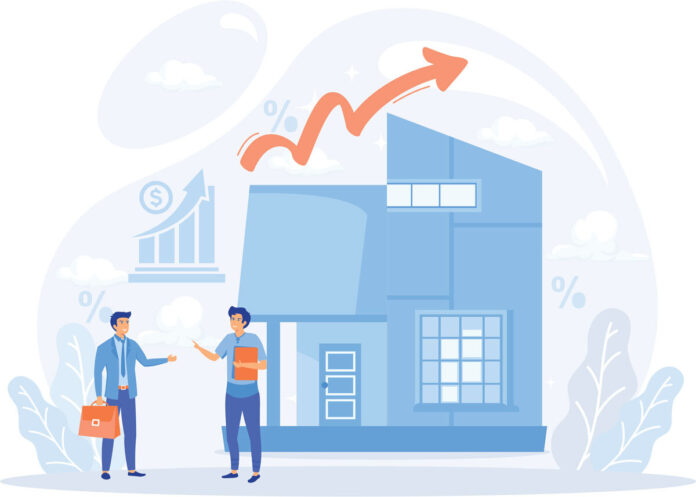Lasting Changes Within Manufactured Housing Communities

Traditionally, Manufactured Housing Communities have sold for roughly a 200-basis point spread between capitalization rate (net operating income divided by sale price, which shows you the rate of return before debt service) and mortgage interest rate. The relationship between capitalization rates and interest rates have been intriguing to watch over the past 5 years. When interest rates dropped in 2020/2021, it seemed like every community was selling for a 5 cap and even at these high prices, we were asked over and over, how do these prices make sense? The threefold answer is bonus depreciation, low cost of debt, and the refinancing capability based on the increase in community valuation. A common business model that we saw over and over, looked something like this:
Purchase Price — $5,000,000.00
Refinance Amount — $5,000,000.00
Equity — $1,250,000.00
Equity Return — $1,250,000.00
Mortgage — $3,750,000.00
New Mortgage — $5,250,000.00
Interest Rate — 3.5 percent
New Interest Rate — 4.25 percent
Refinance Date — 5 Years
A buyer purchases a community for $5 million, puts $1.25 million as the down payment and gets a mortgage on the rest. After 5 years, they implemented their business plan and increased the value of their property and doing a cash out refinance. The reality of this situation is, that interest rate is now 6.5-8 percent, not the projected 4.25 percent, which will reduce the debt burden the property can carry and therefore the community valuation.
Interest rates are up, the bonus depreciation is sunsetting and implementing a value-add strategy for communities is more difficult than ever. So, the prices of communities should be coming down, right?
Inverted Cap Rate to Interest Rate
The argument is that communities are more expensive today than ever before because the cap rates that MHC’s are trading at have come up, but not nearly enough when compared to the cost of debt. The deals that are currently listed on the market largely have an inverted cap rate to interest rate spread, meaning the mortgage interest rate is higher than the cap rate. Some would argue that cap rates are not the only way to value a property, specifically on deep value-add projects, and they would be correct, but this is a measure that every financial institution valuation is based on, so I believe it is a fair barometer of the industry. One thing holding MHC prices so steady is the extremely low default rate on the mortgages, especially when compared to other forms of real estate.
Neutral Trading Ground
Even though sale prices have stayed steady, it doesn’t mean that communities are selling. Although transactions are still getting done, we are seeing more communities pulled from the market than ever before. Sellers want aggressive prices and buyers are expecting a deeper discount because of the above-mentioned changes in the market. Sellers are also not in a position where they necessarily need to sell, they are still making their debt payments, but our prediction is that more community owners will be in a position where they need to sell as more communities come up for refinancing over the next 12-24 months.
A New Age of Operating
Inside of communities, we have seen some changes that we believe are here to stay, that have altered the financial viability of communities. We see value-add business plans regularly and those are the plans that have been the most affected. I feel like an old man saying back in my day, but not too long ago we used to be able to purchase a new home for $29,000, modify the lot and set a home for $10,000 to $12,000. Now, we are over $50,000 for a new home and $20,000 for the lot modification and set, in most midwestern markets, anyhow. That makes infilling homes a lot more challenging, because selling a $70,000 home is difficult in markets where the average single-family home is not over $250,000. The pivot here is we are now seeing communities go further with renovating existing homes. Where a home would have been demolished years ago, today it is undergoing an extensive renovation to keep the end sale price closer to what the market can absorb.
Payroll has also become a large burden, especially for small communities with limited budgets. The average entry-level, full-time community employee makes roughly $20 per hour and those prices have increased to keep up with basic retail and service industry competition. The reliable $15 per hour employee is a thing of the past and now we are having to adapt. What that looks like is cutting staff and outsourcing basic maintenance functions, like snow removal, lawn care, and basic plumbing repairs.
All those items have also increased in cost, so the savings (if any) is not significant. On the management side, we have centralized and automated as much as possible within our corporate office to lower the need for on-site staff. There used to be a need for someone on-site collecting rent, processing leases, handling resident communications, but all of that can be taken off-site and/or automated. What is more important now than ever is the need for skilled labor caring for the property.
If the last year has taught me anything, is our crystal balls are broken and while things have become more difficult, strong operators are continuing to be successful and overcome these challenges. Proactivity and innovation always win out.










